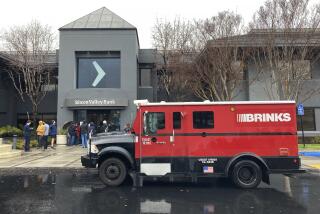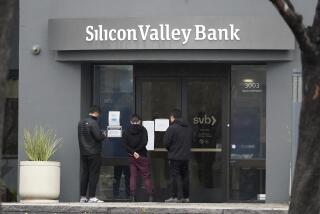The foreclosure mess
- Share via
The banking industry may finally have found a way to help struggling homeowners — by fouling up the paperwork so badly that foreclosures can’t proceed as planned. Several mortgage-servicing companies have acknowledged that the workers who were supposed to verify foreclosure documents didn’t actually, you know, read them. Meanwhile, judges in at least three states have blocked a handful of foreclosures because of confusion over who actually owned the loans, which had been bundled into securities that were sold in fragments electronically.
The procedural problems have led several top lenders to suspend their efforts to repossess homes in the 23 states that require a judge’s approval to foreclose. (No such permission is required in California.) Bank of America went further on Friday, announcing a temporary halt to foreclosures in all 50 states while it reviews its documents. “Our ongoing assessment shows the basis for our past foreclosure decisions is accurate,” the bank said in a statement, but added, “Providing solutions for distressed homeowners remains our primary focus.”
And there’s the rub. Few, if any, of the solutions offered by lenders or the government are making much of a difference. The number of borrowers who are in foreclosure or in serious default has dropped from its peak earlier in the year, but it remains high — about 4.4 million in August. The situation could worsen dramatically if housing prices tumble again, as some analysts have predicted, pushing more home values well below the amount owed and prompting more borrowers to default.
Against this backdrop, some homeowner advocates are calling for a nationwide freeze on foreclosures until the paperwork problems are settled. It makes sense for high-volume lenders such as Bank of America to check their procedures in all 50 states, not just in the ones with court-approved foreclosures. But for other lenders to stop foreclosures in situations where there’s no suggestion of impropriety will only delay the day of reckoning.
One underlying problem is that even today, more than three years after the bubble burst, lenders still don’t have the staff to keep up with the flood of defaults. Although most troubled borrowers are probably beyond help, there are hundreds of thousands of others who could afford a reduced mortgage that costs the lender less than a foreclosure. But figuring out which borrowers fit into that category is labor intensive. The sooner lenders add enough staff to make those decisions at the scale required, the sooner the housing market can improve. That can’t happen fast enough, given how central housing is to the U.S. economy.
More to Read
Inside the business of entertainment
The Wide Shot brings you news, analysis and insights on everything from streaming wars to production — and what it all means for the future.
You may occasionally receive promotional content from the Los Angeles Times.










